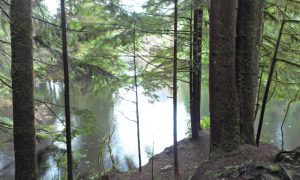Life Hunt Project — Animalia in B.C.
Okay, new project!
We want to learn something new about animals that can be found in B.C. I am challenging you to look for animals you don’t know ANYTHING about. Do something new! Look on our taxonomy chart at the phylums under ANIMALIA. What kinds of cool organisms could you do?
We will not do fungi and plants yet, though. More on that as we get going to the watershed, okay?
Want to do a search of B.C. animals? The B.C. Government maintains a great, searchable list. You can specify whether you want to find animals, plants, or ecosystems. Check out the list here. You can tell it if you want to see endangered, red list, blue list, endemic, native, or other species. I think it would be interesting to do something that is ENDEMIC to B.C. Don’t know what that means? Look it up, as we discussed it in class!
Once you have decided on an animal, tell me. I would like each person to do something different. Some people signed up for one today on the board. Don’t worry, there are lots of possibilities!
Then, you will need to research the following about the animal:
- Common and Latin names
- Taxonomy Chart
- Habitat and Ecosystem where you would find it — describe it and give location
- Food Chain for the organism
- Adaptations
- Interesting Facts, including how the animal may have been used or represented in First Nations stories
- Pictures of the animal
After you have research, then we will be using the art of Sue Coccia as an inspiration and creating animal art of our own. You will find out the general shape outline of your organism and fill a page with it. Inside the shape you will place other images that communicate the information you have found above about the organism. I have samples of Sue’s art in class, you can search up images of her art online, and there are more here.
Notes need to be taken just like we would take independent project notes. You need to record resources as you go along. You may use online or book resources. There are many in our classroom you can look at!
Criteria for success? Show you understand the terms we have been talking about in class when referring to ecosystems, biomes, etc. by using them in your research and then including information in your drawings. Ensure you have included information from all the bullet points above. Be able to explain each image you include in your art, using researched information. We will make a formal rubric in class together.
By the way, if you are stuck on the drawing part, you can also print pictures and use their outline — ask me in class.
I look forward to finding out cool facts about the amazing animals that are found on our coast and that make up the important biodiversity of our world. Maybe you will find inspiration at UBC during our field trip!

